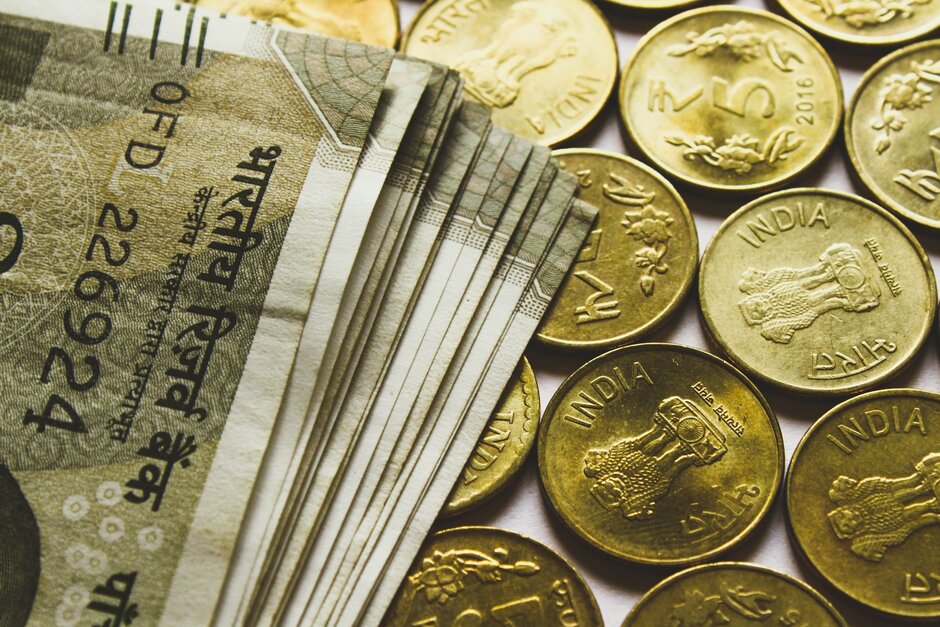Created
: 2024.09.12














![]() 2024.09.12 13:10
2024.09.12 13:10
The USD/INR pair moves sideways on Thursday as traders speculate potential market interventions by the Reserve Bank of India (RBI) to prevent the Indian Rupee (INR) from weakening beyond the 84.00 level. Traders await Consumer Price Index and Industrial Output data from India scheduled to be released later in the day.
Additionally, subdued crude Oil prices provide support for the Indian Rupee against the US Dollar (USD). India, the world's third-largest Oil importer, stands to benefit from lower import costs. Concerns over weakened Oil demand have offset the impact of Hurricane Francine on the United States (US) Oil production, the world's largest crude producer.
The Indian Rupee may receive support from the expected rise in foreign inflows into domestic equities following August's US Consumer Price Index (CPI) data. This US inflation report has heightened the likelihood that the Federal Reserve (Fed) will begin its easing cycle with a 25-basis points interest rate cut in September.
According to the CME FedWatch Tool, markets are fully anticipating at least a 25 basis point (bps) rate cut by the Federal Reserve at its September meeting. The likelihood of a 50 bps rate cut has sharply decreased to 15.0%, down from 44.0% a week ago.
The Indian Rupee remains slightly below 84.00 on Thursday. Analysis of the daily chart shows that the USD/INR pair is consolidating within a symmetrical triangle pattern, indicating reduced volatility and a phase of consolidation. However, the 14-day Relative Strength Index (RSI) remains above 50, suggesting that the bullish trend is still in play.
On the downside, the nine-day Exponential Moving Average (EMA) at 83.93 could serve as immediate support, aligning with the lower boundary of the symmetrical triangle near 83.90. A drop below this level might indicate a bearish shift, potentially applying downward pressure on the USD/INR pair and driving it toward its six-week low around 83.72.
On the resistance side, the USD/INR pair is consolidating, along with the upper boundary of the symmetrical triangle near the 84.00 level. A breakout above this point could propel the pair toward the all-time high of 84.14, recorded on August 5.
The Indian economy has averaged a growth rate of 6.13% between 2006 and 2023, which makes it one of the fastest growing in the world. India's high growth has attracted a lot of foreign investment. This includes Foreign Direct Investment (FDI) into physical projects and Foreign Indirect Investment (FII) by foreign funds into Indian financial markets. The greater the level of investment, the higher the demand for the Rupee (INR). Fluctuations in Dollar-demand from Indian importers also impact INR.
India has to import a great deal of its Oil and gasoline so the price of Oil can have a direct impact on the Rupee. Oil is mostly traded in US Dollars (USD) on international markets so if the price of Oil rises, aggregate demand for USD increases and Indian importers have to sell more Rupees to meet that demand, which is depreciative for the Rupee.
Inflation has a complex effect on the Rupee. Ultimately it indicates an increase in money supply which reduces the Rupee's overall value. Yet if it rises above the Reserve Bank of India's (RBI) 4% target, the RBI will raise interest rates to bring it down by reducing credit. Higher interest rates, especially real rates (the difference between interest rates and inflation) strengthen the Rupee. They make India a more profitable place for international investors to park their money. A fall in inflation can be supportive of the Rupee. At the same time lower interest rates can have a depreciatory effect on the Rupee.
India has run a trade deficit for most of its recent history, indicating its imports outweigh its exports. Since the majority of international trade takes place in US Dollars, there are times - due to seasonal demand or order glut - where the high volume of imports leads to significant US Dollar- demand. During these periods the Rupee can weaken as it is heavily sold to meet the demand for Dollars. When markets experience increased volatility, the demand for US Dollars can also shoot up with a similarly negative effect on the Rupee.
![]()
Created
: 2024.09.12
![]()
Last updated
: 2024.09.12

FXStreet is a forex information website, delivering market analysis and news articles 24/7.
It features a number of articles contributed by well-known analysts, in addition to the ones by its editorial team.
Founded in 2000 by Francesc Riverola, a Spanish economist, it has grown to become a world-renowned information website.
We hope you find this article useful. Any comments or suggestions will be greatly appreciated.
We are also looking for writers with extensive experience in forex and crypto to join us.
please contact us at [email protected].
Disclaimer:
All information and content provided on this website is provided for informational purposes only and is not intended to solicit any investment. Although all efforts are made in order to ensure that the information is correct, no guarantee is provided for the accuracy of any content on this website. Any decision made shall be the responsibility of the investor and Myforex does not take any responsibility whatsoever regarding the use of any information provided herein.
The content provided on this website belongs to Myforex and, where stated, the relevant licensors. All rights are reserved by Myforex and the relevant licensors, and no content of this website, whether in full or in part, shall be copied or displayed elsewhere without the explicit written permission of the relevant copyright holder. If you wish to use any part of the content provided on this website, please ensure that you contact Myforex.
Myforex uses cookies to improve the convenience and functionality of this website. This website may include cookies not only by us but also by third parties (advertisers, log analysts, etc.) for the purpose of tracking the activities of users. Cookie policy